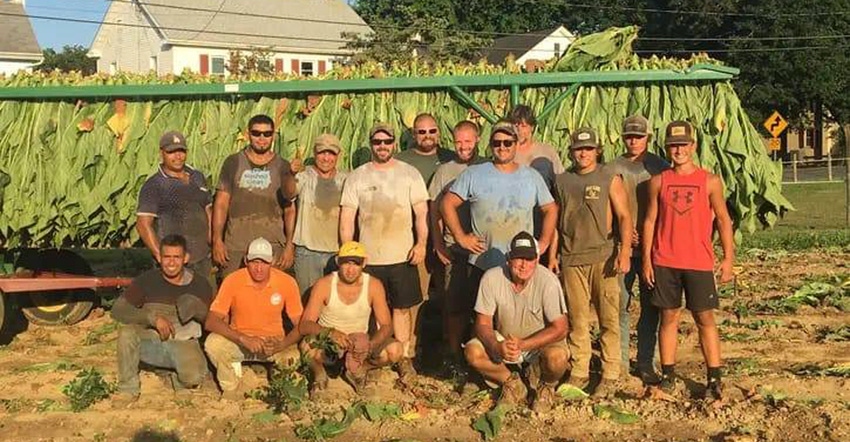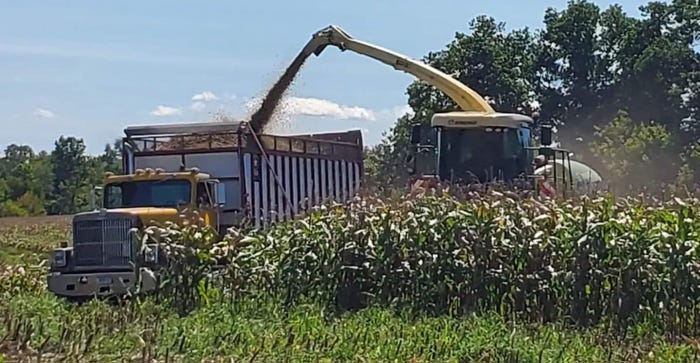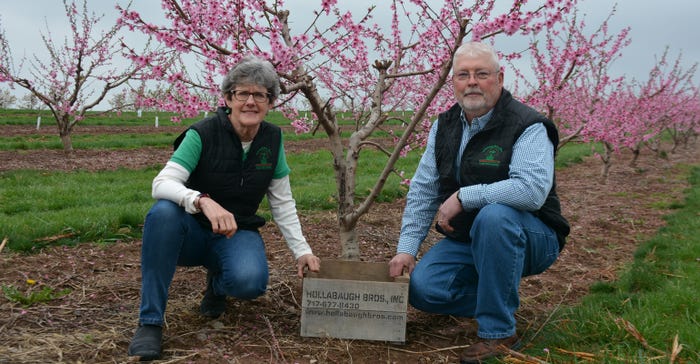
Like most other farms, rising inputs have affected Dutch Hollow Farm in Schodack Landing, N.Y., to the point that the farm’s owners had to make significant changes this past year.
“We’ve tried to keep our efficient management going,” owner Paul Chittenden says. “It’s affected some things. We are tough on looking at fertilizer costs.”
He says the farm “concentrated on soil sampling to make sure what we were doing wasn’t requiring us to spend any extra. We’re being much more careful and observant more than anything.”
So far, Chittenden has not purchased his crop inputs for 2023. The farm milks 750 registered Jerseys and farms 2,000 acres.
Thor Oechsner, owner of Oechsner Farms in Newfield, N.Y., says the rising inputs resulted in lower profits. He raises 1,200 acres of specialty organic grains.
“We’re trying to be more frugal in terms of thinking about doing a field operation,” Oechsner says, adding that skipping operations when possible or combining them helps. But he thinks of rising inputs a little differently than most farmers.
“I know I’m in the minority, but I don’t think all these rising input costs are necessarily a bad thing,” he says. “High fuel and other input costs make us more conservation-minded and more frugal.”

FEWER PASSES: Making fewer passes over the field has helped cut fuel costs for Dutch Hollow Farm in Schodack Landing, N.Y.
At Willowbend Farm in Shortsville, N.Y., farm partner John Mueller says the farm bought some seeds as “they offer a 14% discount if you order and pay early,” but he hasn’t bought any other inputs for 2023.
The farm manages its 9,000 acres efficiently, he says, using minimal field passes and soil sampling to raise corn, alfalfa, some grasses, and wheat and green beans. The farm milks 5,000 cows.
Mueller says that although costs of inputs are up 21%, prices are, too — by 42%.
“Dairy farmers are in general having a really good year, maybe even one of the best years ever,” Mueller says. “We sold wheat for $8 a bushel, and we’re used to $3. That’s been huge. The war in Ukraine has affected the market.”
Farmers can get information from many sources, but at the end of the day, they learn a lot of what they do from other farmers. To that end, American Agriculturist surveyed farmers from around the region to gauge how this past season went and what changes they were planning to make next spring. Read what these growers had to say; maybe you can apply an idea to your own farm:
Nathan Crooke, Windybush Hay Farms, Perkasie, Pa.
400 acres of grain, 350 acres of hay, 900 acres of mulch hay
How would you describe your 2022 growing season? It was an easy growing season to make hay, but not a good growing season for soybeans, being that it was extremely dry. It was frustrating watching the radar, and the rains keep coming and missing us.
How were your yields in comparison to 2021 and your five-year average? For us, the soybean yields were about half, and I should be grateful for what I did get. About 35 bushels an acre, last year was in the 70s. The bright spot was the wheat yields were tremendous, and harvest was a breeze. The wheat averaged 104 bushels.
How did you navigate the high input costs? Whether it was a mistake or not, we skipped putting potash on all our hay ground and just focused on grain crops for fertilization need. We need minimum N for first-cutting hay, and never ended up fertilizing the second cutting. For soybeans, we did fertilizer for that. The high prices are continuing for next year, so I'm going to pull some soil tests and try to do some math and see if we can afford to put potash on hay ground this year.
What changes are you planning for 2023? With the high cost of fuel, we normally truck a lot of grain for neighbors in the community — probably haul 50,000 to 60,000 bushels for neighbors. But we're cutting back on custom trucking. I've cut back on an employee as well. Just trying to do more with less. I’m just trying to get more bigger, more efficient equipment. We're going to go to all no-till in 2023.
Brian Harnish, Harnish Farms LLC, Pequea, Pa.
600 acres of wheat, corn, soybeans and specialty crops
How would you describe your 2022 growing season? It was a great year for us in southern Lancaster County. We experienced ideal planting conditions in the spring and had just enough rain to finish off the grain crops in late summer. I realize some areas of our state and even county did not have close to ideal weather conditions this season, but for us we could not have been more fortunate.
How were your yields in comparison to last year and your five-year average? Our corn and wheat yields were above last year and above our five-year average. Soybeans were in the middle of our five-year average and lower than last year due to timing of rains.
How did you navigate the high input costs? We had to use some different chemistries this year due to the lack of availability, or extreme cost of some brands. We also sidedressed a higher percentage of our corn this season in order to maximize N availability and reduce chances for nitrogen loss by applying it closer to the time the plants need it. Most of our higher input costs were more than offset by high yields and prices this year.
What changes are you planning to apply to the farm in 2023? Nothing drastic, just working on improving the things we can control. Timeliness of fertilizer and fungicide applications are something we are always trying to fine-tune, and every growing season is different. We are always looking for new markets for our specialty crops, so that will be a key focus moving forward.
Brad and Kay Hollabaugh, Hollabaugh Bros. Inc., Biglerville, Pa.
400 acres of tree fruits
How would you describe your 2022 growing season? Certainly very challenging due to the untimely passing of our son, but that aside, challenging in that we were either hard pushed to have enough help, or often, were scrambling to find work for everyone. As the weather goes, it really couldn’t have been much better. We got rainfall when we needed it in spite of prolonged periods of too much heat and humidity. Our apples were a bit late in “finishing” because we simply didn’t fall into cool enough weather overnights until later than we’d have liked. But all in all, a very good season.
How were your yields in comparison to last year and your five-year average? In terms of apples, our yields were down substantially from 2021, but one must consider that the 2021 crop was an “outlier” in terms of what is normal. The 2021 crop was exceptional, and we feared that our return crop would be poor. However, if we compare our yields for the 2022 harvest with the past five years, we are about average.

CHALLENGING YEAR: After the untimely death of their son, Bruce, Brad and Kay Hollabaugh adopted the phrase, “For Bruce, we will farm.” Apple yields were down this season, but Brad says yields are closer to the five-year average.
How did you navigate the high input costs seen in 2022? Although we normally bid our crop chemicals during the late winter and early spring, we put out our bids at the end of the previous calendar year as prices on chemicals — especially herbicides, nutrients and some fungicides — were projected to increase substantially in 2022. We did reduce our total investment in fertilizers this season. Labor costs were up across the board for all farm enterprises. In order to secure and retain employees, and remain competitive in the regional marketplace, we had no choice but to increase wages. We reduced total, weekly hours for the crew postharvest, a practice we normally implement and did so again for 2022. We ran our equipment as needed all season and paid the bill. We worked hard to increase overall sales, and that was a mantra for the 2022 season. Lower margins in some cases had to be coupled with increased sales. Although we didn’t have record-breaking sales, we did expand our wholesale customer base and continued to draw a strong retail business such that there was growth in both marketing enterprises.
What changes are you planning to apply to the farm in 2023? We will begin weekly family board meetings. It is at these meetings that we brainstorm and try to come up with the next year’s strategy. Sounds rather lame, but it has worked for us for years. We’ve got a pretty diverse ownership, and we all bring ideas to the table.
About the Author(s)
You May Also Like






